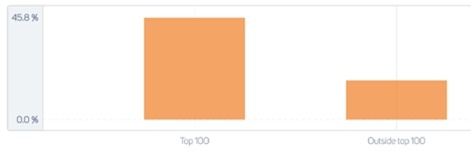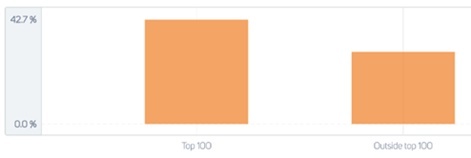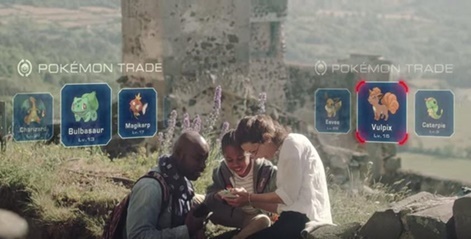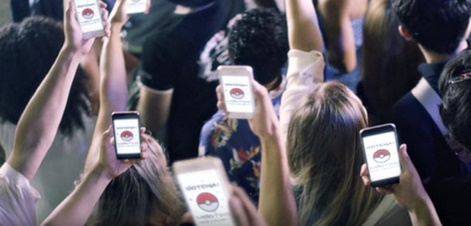Taija Kanerva is Chief Game Analyst, Japan, at GameRefinery.
Great gameplay is about amazing features and ongoing user engagement. Miss a step here, and even the hottest game can experience a drop in popularity and user interest as rapidly as it rose up the app charts.
This is what we have observed at GameRefinery with Pokemon GO, a blockbuster game that is seriously in danger of losing its lustre as users complain they have grown bored with its repetition and buggy game mechanics.
Even though I am personally quite entertained by Pokemon GO while I walk to the office and enjoy the excuse it gives me to go outside in good weather to track down yet another critter, there are four key features Niantic would do well to add ASAP in order to boost user interest and engagement, and so stem the tide of users giving up on the game altogether.
We arrived at this list by distilling the data contained in GameRefinery’s extensive database, which analyses the top 150+ features across to the top 200+ grossing apps, as well as another 500+ games outside the top grossing list, into actionable advice.
This data-driven approach allows us to identify and validate the features - and feature combinations - that define a winning game. In the case of Pokemon GO what we have is an actionable checklist the company really has to get right to get players back into the game - and keep them there.
1. Limited time events are pure gold.
Events that are recurring (for example, once a week) or non-recurring (unique or rare) in game can grow revenue, increase player retention and boost overall player engagement.
It’s why most companies depend on events as their main way to monetise their game - and it’s a strategy that our data shows is table stakes among top apps.
According to GameRefinery’s database, 45.8% of the top grossing 100 iOS games in U.S. contain both recurring and non-recurring limited time events. In contrast, only 15.5% of the games outside top grossing 100 utilise this feature.

Moreover, an additional, and comparably smaller, correlation can be found when looking only at games using non-recurring events.
Here, nearly half (42.7%) of the top grossing 100 and 29.5% of the games outside top grossing 100 contain non-recurring events.
The takeaway: Niantic would clearly benefit from add both recurring and non-recurring events to the game.

Ironically, the company appears to have noticed this key feature is missing from the gameplay - one of the reasons it has hinted in the Pokemon GO trailer that it will add the option to catch rare, limited time Pokemon.
What’s more, legendary Pokemon should be out and about once the game is released in all locations. A Smart move, since our data suggests the popularity of the game will jump once events are added.
2. More gachas mean loads more fun.
Pokemon eggs that the player has to “walk open” are a brilliant way to get players to move around - and engage more with the game - in anticipation of getting something really good and/or cute to hatch.
But the game could do one better - and hugely benefit - if it would tap into gachas. Personally, I’m a big fan of gachas since I love the feeling of anticipation while waiting to see what I get. I also love presents and pleasant surprises, but that’s a whole another story.
Our data shows gachas are showing up across a significant number of incredibly successful games.
But I’m not the only one who has embraced gachas in gameplay. Our data shows gachas are showing up across a significant number of incredibly successful games. Overall, 58% of the top grossing 100 iOS games in US feature one or more gachas.
The takeaway: Niantic seems to know that something in the game is missing, which is why their CEO John Hanke recently teased the audience at San Diego Comic-Con, hinting that his team has discussed the possibility to breed Pokemon in the game.
For the moment we can’t be sure. But we can be sure this feature would be a step in the right direction. However, gachas should be the goal as they can both boost user excitement and incentivise in-app purchases. Even better if some of the gachas were event-exclusive, thus motivating players to try even harder to obtain elusive Pokemon.
3. Unleash player passion to trade and share.
It’s ironic that a game that thrives so much on player interaction still lacks a feature that would allow players to exchange Pokemon with each other.
Caught a gazillion Snorlaxes while your friend has none? Then trade it for a Porygon, perhaps. Getting ready to evolve your Pokemon while your lucky egg boost item is active, but missing a crucial Pidgey? Then ask a friend for help. It’s a no-brainer really.

The absence of this feature is all the more amazing if we consider that the original Pokemon games on Gameboy offered this feature, giving players incentive to interact with each other. There, the only way to obtain every single Pokemon was to exchange them with other players.
Our data shows that only 15.6% of the games in the top grossing 100 list have tapped into the feature of direct trading, but we are certain that it would be a perfect fit to a game like Pokemon GO, encouraging deeper engagement and higher player retention.
The takeaway: Trading is an activity that encourages deeper engagement and drives higher retention.
Only 15.6% of the games in the top grossing 100 list have tapped into the feature of direct trading.
It appears that Niantic really listens to the players, as they promise a trading feature will be added to the game in the future. It will be interesting to see if they also crack the code on how to boost user retention in order to monetise the activity properly and profitably.
4. Cash in on collaboration.
The Pokemon GO trailer hints at big collaboration events, where players could gather at a set location in order to defeat and receive a legendary Pokemon (in this case, Mewtwo) together.
Thus far these non-competitive, co-operational efforts are non-existent, but there are many other effective features, besides collaborative PvE battles, Niantic could implement right now.
For one, players could activate specific locations within a set timeframe to trigger a rare Pokemon spawn that all players, by working together, would receive in their account.
One could imagine that making it possible for players to collect and trade pieces of an in-game puzzle, or a similar object, would likewise spark a meaningful collaboration - especially if there is a reward for their collective effort.
Finally, players could be motivated to donate material items or resources to a common pool for a prize that benefits the entire community or team. Granted, these are just a few suggestions. I’m sure Niantic could add a lot of fun and imaginative stuff to the list.

According to our database, 28% of the iOS top grossing 100 games in the US feature non-competitive co-operational efforts and tasks in comparison to 15% of the games outside top grossing 100, so there is a clear link between this feature and a game’s success rate.
The takeaway: Non-competitive, co-operational efforts are cool features that would be true crowd-pleasers - provided they are implemented properly and creatively.
As a fan of the game I’m keen to see Niantic bake these new features into Pokemon GO because improvements to gameplay would give me (and other players) a more enjoyable experience.
As a game analyst privy to the data that proves each of these features can significantly - and positively - impact player retention, I hope Niantic is smart enough to act fast enough and address the shortcomings in a game that, at its core, has the potential to drive long-lasting loyalty.
Look for Taija’s companion post, going live on Tuesday over at the GameRefinery blog, where she details four more features Niantic should integrate to boost retention and - ultimately - extend the lifecycle of the game.
As the Chief Game Analyst - Japan at GameRefinery Taija Kanerva is living her dream. Her interest and enthusiasm for digital games and Japanese culture started early in her childhood and later became the focus of her formal education.
Her Master’s thesis (2015) for University of Helsinki compares Japanese and Western games and gaming cultures. She has held positions at Rovio and Ubisoft before joining GameRefinery in 2016.




















